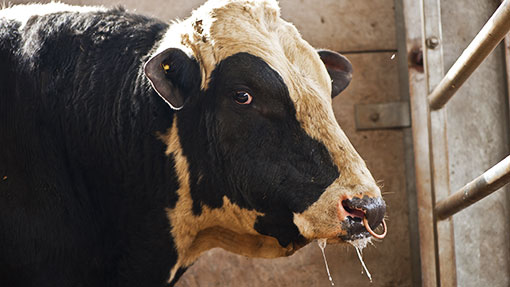Top tips for safe cattle handling to avoid injury

Cattle handling is one of the most high-risk livestock jobs when it comes to accident rating.
Over the past decade, on average one person a week has been killed in an on-farm accident.
Although individuals – both farmers and members of the public – have been killed by cattle in fields, it’s cattle in confined spaces being moved or handled that presents the greatest risk.
The Health and Safety Executive (HSE) says injuries and accidents happen even to experienced handlers of cattle but often involve poor equipment, underestimating the strength or size of the animal and ineffective methods of moving cattle.
With this in mind, it’s worth checking the HSE’s tips to see if your cattle handling procedure has any potential weaknesses.
1. Ability to handle cattle – training and age
- Handlers should be trained to work safely with stock – has your team all undergone training?
- Consider your handling and safety equipment and whether everyone knows how to use it properly.
- While no legal limit has been set for cattle handling, the HSE recommends that children under 13 should not normally be allowed to enter cattle housing or handle cattle.
- Many incidents involving cattle happen to people beyond normal retirement age, when they are less agile, so really think about older people on your farm and whether they are truly up to handling cattle.
2. Working order of handling facilities
- Review your handling facilities, assessing truthfully whether they really are sufficient. Makeshift gates and hurdles aren’t good enough and could lead to injury.
- Never attempt to treat or work on any animal that is held by gates alone, or that is otherwise free to move at will.
- There may be times when it’s not possible to handle animals securely, such as when you attending a downer cow. In situations like this, make sure there is an adequate escape route.
3. Evaluate race set-up
Animal flow and flight behaviour can be determined by the way a race is designed.
- Consider how readily animals can enter the race. Ideally they should have a funnel end, with enough room in the collecting pen for them to feed into the funnel easily.
- Check to see whether animals can see clearly to the crush and beyond. This will allow them to move readily along the race. It’s worth noting animals will be more prepared to move towards a light area than into the dark.
- Flighty animals may try to jump over the sides of the race. It’s important to make sure race sides are high enough to prevent animals from jumping over them while being properly secured to the ground and to each other.
- Consider sheeting the sides of the race, as this can help keep cattle moving by reducing visual disturbances such as shadows and shields them from other animals.
4. Bull history
Consider your bull’s history and past behaviour as this could give you an idea to your bull’s current behaviour.
- If you didn’t rear the bull from birth, find out how it was handled and the type of equipment used. When bulls are handled from an early age, they tend to learn to associate the present of people with pleasant things such as feeding, grooming and exercise.
- For ease of handling ringing your bulls at about 10 months old may be something to consider, especially when they are polled.
5. Safe cattle housing
- In many cases bulls are often housed in isolation, making them, in some cases, frustrated and aggressive due to a lack of contact. It may be worth siting the bull pen where they can see other cattle and farm activity.
- Ensure walls are of the correct strength. Guidelines suggest a wall thickness of 215-mm-thick wall of reinforced concrete blocks, topped with railings or bars so that he can see what is going on.
- Consider how child deterrent the bull housing is. Are fences and gates high enough to prevent children passing through or over into the bull pen? Also think about locking external doors and gates to prevent unauthorised access. When bull beef animals are being housed consider putting them in groups of between 15–20.
- Think about how you access the pen. Make sure you are able to open and close internal pen division gates from outside the pen. By making sure you have an empty pen in any arrangement of adjacent pens, you will always be able to move animals out of any pen you need to enter.
See more like this: Handling sheep and Complacent livestock handlers risk death
